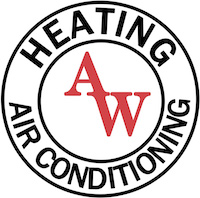
When looking for a heating and cooling system for your home, it’s critical to choose one that balances efficiency, operation and the impact on your wallet. That’s why many property owners explore the possibility of mini-splits for comfort in their home.
Mini-splits—often referred to as ductless mini-splits—provide a variety of advantages that make them an appealing solution for both homes and businesses. They're highly energy efficient, decreasing energy consumption and saving on utility bills, because they avoid the energy losses that can come with the ductwork found in traditional HVAC systems. They also permit users to control the temperature in each room, enhancing overall comfort while saving energy.
If you’re considering mini-split installation in Lincoln, it’s important to first find out if these devices are recommended for your living situation. Here, we’ll explore how mini-splits measure up to other heating and cooling systems.
What a Mini-Split Is and How It Works
A mini-split, or ductless mini-split, is a heating and cooling mechanism that does not use ductwork. It's often used in homes that don't have any air ducts and for homes with rooms that aren’t served well by the home's existing HVAC system.
A mini-split system is made of two primary components: an outdoor compressor/condenser and an indoor air-handling component. The two are attached by a conduit housing the power cable, refrigerant tubing, suction tubing and a condensate drain.
Here's how it works: the exterior compressor moves the refrigerant necessary for heat exchange through the coils and the air handler. The interior device pulls in air from the room, cools or heats it over the coils and sends the conditioned air back into the room.
Mini-Split vs. Central Air
Mini-splits provide targeted cooling in certain rooms or zones of your residence. They are outstanding for energy efficiency because they only heat or cool the areas you desire. However, they may not blend seamlessly into every area due to their wall-mounted indoor units.
Conversely, a central air system uniformly chills your entire home, keeping consistent comfort levels throughout. Its ductwork is hidden away, preserving the interior design of your home. On the other hand, it may not be as energy efficient as a mini-split, especially in larger homes or residences where certain rooms may not need continuous conditioning.
Mini-Split vs. Window AC/Window Unit
Mini-splits are typically more energy efficient and less noisy than a window air conditioning unit and are able to cool multiple rooms. This is why mini-splits are a convenient alternative for many homeowners. They also utilize a form of refrigerant that is more environmentally safe, limiting their environmental impact. These devices can even add value to your home due to their reliable nature and superior cooling capabilities. However, they come with a greater initial investment.
On the other hand, window air conditioning units are less expensive up front. They are often a good fit for homes that cannot accommodate a central AC system or for homeowners with budget constraints. Despite these advantages, window units can consume up to 40% more energy than ductless mini-split systems and typically make more noise.
Mini-Split vs. Portable AC
The answer to what is better, a ductless mini-split or a portable air conditioning unit, is dependent on your goals. If your main focus is energy efficiency and performance, a mini-split is much more effective than a portable AC unit. However, if funding is a major concern, a portable AC costs less.
Mini-Split vs. Gas Furnace
Choosing between a mini-split system and a gas furnace depends on a range of factors which can include the climate in your city, home size, energy efficiency desires and spending plan.
A mini-split system usually is more energy efficient than a gas furnace. It can heat and cool targeted areas in your home, delivering custom climate control in targeted rooms. Mini-splits also are generally quieter and have a greater up-front cost, but their operating costs are usually smaller due to their better energy efficiency.
Alternatively, a gas furnace can be a very effective heating source, particularly in colder climates where mini-split heat pumps may not be able to maintain comfort levels in the bitter cold. While they are less energy efficient than mini-splits, gas furnaces typically have lower initial costs. But, their operating costs can be more costly, especially if natural gas prices jump up.
Mini-Split vs. Heat Pump
Mini-splits and heat pumps use the principle of heat transfer. They are both energy efficient, but a heat pump's air ducts can use more power. This difference aside, the choice between a mini-split and a heat pump often is based on on individual needs and circumstances.
For instance, if you are living in a warmer climate and mostly need cooling, a mini-split system might be a more effective choice. But then again, if you require both heating and cooling and already have ductwork in place, a heat pump may be a more efficient option.
Mini-Split vs. Space Heater
With regards to heating and cooling a household, mini-splits and space heaters each have advantages. However, for all around efficiency, versatility, comfort and safety, mini-splits stand out. Mini-splits have superior energy efficiency simply because they deliver conditioned air straight to different zones and can serve numerous rooms at once.
Space heaters are a great deal less expensive to buy but are typically used only for heating a limited area or just one room. They also are often less energy efficient. As opposed to mini-splits, space heaters do not supply cooling. The most significant drawback for space heaters is the risk of fire. Authorities say some 1,700 fires annually involve space heaters.


